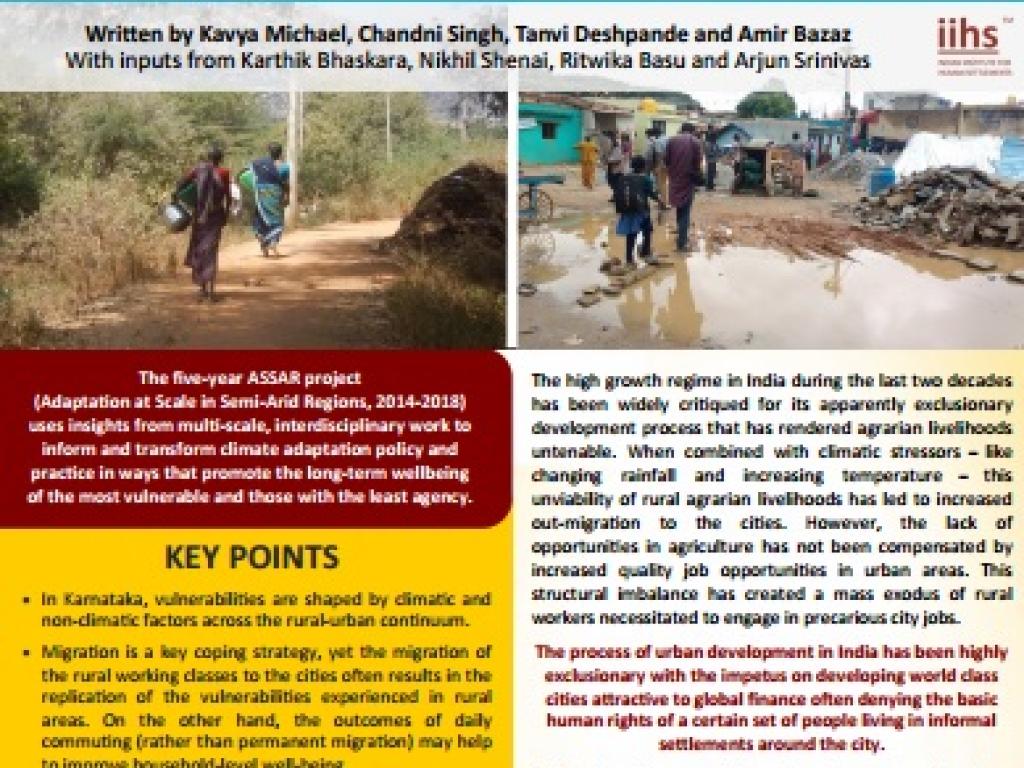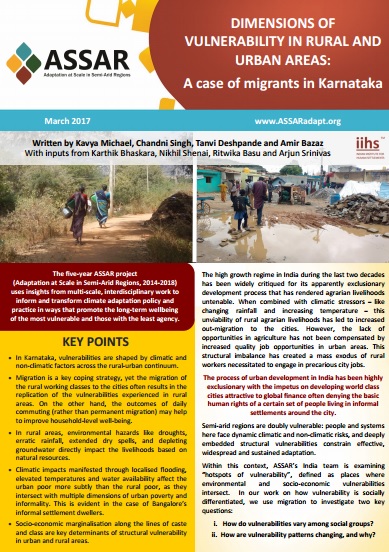Dimensions of vulnerability in rural and urban areas: A case of migrants in Karnataka

By Kavya Michael, Chandni Singh, Tanvi Deshpande and Amir Bazaz
The high growth regime in India during the last two decades has been widely critiqued for its apparently exclusionary development process that has rendered agrarian livelihoods untenable. When combined with climatic stressors – like changing rainfall and increasing temperature – this unviability of rural agrarian livelihoods has led to increased out-migration to the cities. However, the lack of opportunities in agriculture has not been compensated by increased quality job opportunities in urban areas. This structural imbalance has created a mass exodus of rural workers necessitated to engage in precarious city jobs. Semi-arid regions are doubly vulnerable: people and systems here face dynamic climatic and non-climatic risks, and deeply embedded structural vulnerabilities constrain effective, widespread and sustained adaptation.
Within this context, ASSAR’s India team is examining “hotspots of vulnerability”, defined as places where environmental and socio-economic vulnerabilities intersect. In this brief we describe how we are using migration to investigate two key questions: (1) How do vulnerabilities vary among social groups? (2) How are vulnerability patterns changing, and why?
Click the image to download the brief
